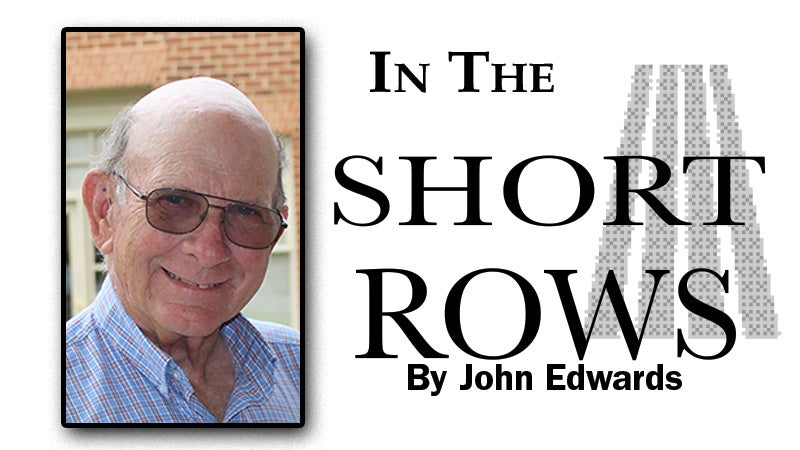Column – Memorable comments on this and that in IW history
Published 5:41 pm Tuesday, April 30, 2024

- John Edwards
I’ve listened to the views of many people on many subjects during the past five decades, and comments by some of those folks remain with me, having found a comfortable corner in my memory.
Some of the most memorable comments have involved one of the county’s greatest economic assets, the James River Bridge. Others involved the efforts several decades ago to pump new life into a dying Main Street.
First, the bridge
Few if any events have done more to positively affect Isle of Wight and Smithfield’s economic life than construction of the James River Bridge system in 1928. The three bridges built by the James River Bridge Corporation — the JRB, Chuckatuck Creek and Nansemond River — provided a direct highway link between Isle of Wight and the Peninsula as well as the south side of Hampton Roads. Those who could see the future impact of automobiles on society correctly predicted that connecting the Peninsula by highway with Portsmouth and Norfolk would be an economic boon to the region.
Ever since, there’s been a love-hate relationship with the JRB. We couldn’t live without it but increasingly dread driving over it in heavy traffic. And now, we’re beginning to rue the bridge’s role in making Isle of Wight the latest go-to hotbed for residential development.
One of the major events in the life of the bridge was the removal of tolls in 1976. The JRB had been a tolled facility ever since its construction, but the 1970s saw public pressure on the Virginia legislature and consequently VDOT to remove tolls. So, in June 1976, the toll gates at the bridge were moved, “ticket books” became collectors’ items and tolls became a bad memory.
It was also during the 1970s that Smithfield began seeing a drain of retail and service dollars as residents increasingly took much of their buying power to city businesses at the other end of the JRB.
In 1978, there was a Smithfield Town Council election and a political newcomer threw his hat in the ring. James Chapman, who would in time become a much-loved mayor, sought a seat. The Smithfield Times held a “Meet the Candidates” forum that spring, the first of many we undertook. One of the questions asked of all the candidates was what they would do to stimulate business growth in town.
There were a variety of politically correct, chamber of commerce-type answers given until it came to Chapman. “Put the tolls back on the bridge,” he said simply.
Chapman wasn’t completely serious, but he was perceptive. He had nailed a key reason for the outflow of dollars.
At about the same time, there were several instances in which bodies of murder victims were dumped in the county. Sheriff B.F. Dixon, standing over the body of a young man who had been shot in Newport News and transported to a wooded area in the county, said Isle of Wight had become a “dumping ground” since the tolls came off.
There was, in fact, a bump in crime attributed to ne’er-do-wells on the Peninsula. Dixon said ne’er-do-wells no longer feared having to stop to pay tolls with the chance of someone questioning them or remembering a vehicle.
Downtown revitalization
When Historic Smithfield Inc. launched a private fund drive to raise private funds for a significant part of the Main Street revitalization project in the late 1980s, one of the first people we called on was Julius D. Gwaltney. We showed him plans for the streetscape project, and he asked what the project hoped to accomplish. We told him that other communities had done the same thing, mostly with public funds, in an effort to stimulate business, and most had failed.
We wanted to beautify Main Street primarily because we wanted future generations to enjoy it.
Gwaltney responded, “If you’d told me it was economic development, I’d have said ‘no,’ but I’ll support it for the grandchildren.” That spirit helped us raise more than a quarter-million dollars in a couple of months, ensuring the project would be launched.
We also asked some Historic District residents their thoughts about the project, and one sticks in my mind. Local historian and raconteur Segar Cofer Dashiell said simply, “Don’t make it too cute.” I feel that, somewhere along the way, we managed to ignore that advice, but it still remains among the best we received.
The weather
Few things are as likely to prompt discussion as is the weather. We love to make our own predictions as well as our own judgments of its impact. And few things could make a rural population more jittery than a spell of bad weather, be it too wet or too dry.
And there are few times during the year when rainfall is more critical than in mid- to late summer. That’s when crops can be made or lost depending on the rainfall pattern.
Veteran Extension Agent Herb Jones had a rapport with farmers that was impressive. He stood alongside them to celebrate the good times and solemnly regret the bad ones.
When corn or peanut crops were at a critical stage, and badly in need of water, one of Herb Jones’ favorite and most repeated comments was one I shall always remember. He would smile and say, “That was a million-dollar rain.”
John Edwards is publisher emeritus of The Smithfield Times. His email address is j.branchedwards@gmail.com.

